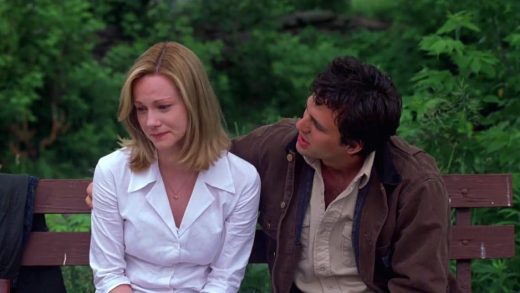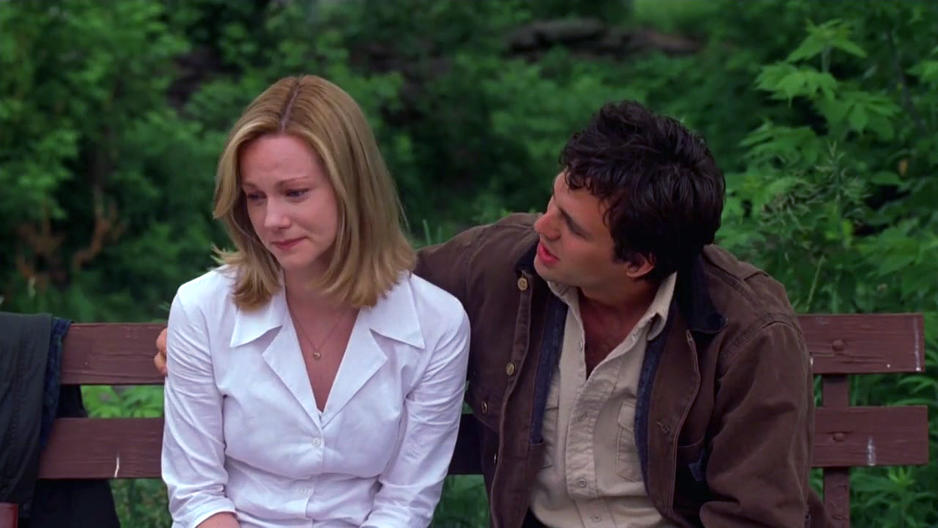How Great Speakers Handle Surprise Disruptions
In the Kenneth Lonergan film You Can Count on Me (2000), Laura Linney and Mark Ruffalo play grown siblings who were orphaned as children. At one point, they’re talking outdoors at night, and a moth flutters into the frame. On most film sets, the director might call cut and shoo it away. Instead, Ruffalo kept talking as he nonchalantly guided the moth onto his hand. His calm reaction kept the cameras rolling, and the unplanned gesture underscored his character’s gentleness.
“We just continue talking as it’s walking on my hand, and then it flies away again,” Ruffalo recently recalled, speaking to Rebecca Mead for the New Yorker this week. “It was probably one of the most profound moments I have had as an actor—where the world collided with the work.”
Anyone who’s used to speaking or presenting knows that disruptions flutter (or crash) onto the scene when they least expect them. Maybe your “moth” will be a faulty projector, a computer glitch, hallway noise—any distraction that threatens to derail your audience’s attention and bury your message. But the most effective speakers know that how they choose to deal with those disruptions might be the difference between a flawless speech and a floundering speech, a fruitful presentation and a fumbled one.
Here are a few quick pointers for handling unforeseen events that threaten to sideline your next talk.
1. Know Your Lines, Even If You Go Off Script
Ruffalo didn’t know the moth would appear, but he no doubt knew his lines. And he and Linney had likely rehearsed the scene. That’s how he was able to keep the conversation going while dealing with the moth at the same time.
Knowing your content and practicing your delivery gives you the freedom to improvise when you face unexpected interferences during your presentation. In fact, it can even boost your message.
So much of speakers’ effectiveness comes down to the stuff they don’t actually say. It’s in their bearing, their body language, their tone. If you can handle disruptions smoothly and gracefully, it may subtly encourage your audience to like and trust you, which can in turn help them come on board with the message you’re delivering verbally.
2. Don’t Hesitate To Engage
Sometimes trying to minimize a distraction only makes it worse. The better approach might be to engage with it head-on—as long as you know how to do it.
I once watched master speaker Brian Tracy turn a pesky interruption into a meaningful encounter. He was speaking about client relationships when a maintenance worker entered the ballroom, opened a closet, and began clanking on pipes. Tracy pressed on, but the noise continued, and the audience was soon distracted. Many speakers would have probably lost it, but not him. With a handheld mike, Tracy strolled over and introduced himself to the maintenance man, whose name was Paul. The conversation went something like this:
“Nice to meet you, Paul. Can I ask you what you’re working on?”
“Trying to get the air flow right in this room. People have complained they’re hot.”
“If you don’t mind my asking, Paul—what’s the toughest part of your job?”
After a short pause, Paul replied, “Well, I guess it’s things like this—trying to do my work and keep everybody comfortable, even while there are hundreds of folks packed into every room.”
“Thanks, Paul,” Brian replied. Then, turning to his audience: “You see, friends, we all have problems like Paul’s. Clients demand your expertise for challenges, and it’s up to you to get the job done and keep stakeholders comfortable and satisfied, regardless of circumstances.”
Tracy then picked up where he’d left off in his talk. And although Paul continued to work, the audience was now more understanding and less distracted.
Try this technique the next time you have a disrupting delay. Engage with whoever or whatever happened to disrupt your talk—not in a rude or condescending way, but in a sincere effort to find out more about what they do and how they do it. Chances are they didn’t mean to distract from your talk and might not even realize they have, and their experience may even help you underscore a point you’re trying to make. Bring the audience along for this spontaneous conversation, and then let the person’s responses help illuminate your content.
Another option is to interact directly with the audience during any downtime. Come to your presentations armed with questions you can ask the audience in emergency situations—anything that elicits feedback, examples, or stories related to your talk.
3. Default To Laughter
I was once making a major pitch to a group of prestigious decision makers when the laptop containing my slides began to generate a high-pitched whine, then suddenly died. In my frantic attempt to resuscitate the machine, one of my flailing arms knocked over a pitcher of water on the table, which soaked my prototypes.
It was a laugh-or-cry moment, and, against my instincts, I chose to laugh. My audience laughed with me—okay, maybe they laughed at me—but tensions melted, and I was able to move ahead, sans slides and prototypes. Best of all, I was able to push ahead unflustered, which I might not have been able to do had I stopped myself from laughing. (And perhaps it was just a sympathy vote, but I wound up getting the decision-makers’ go-ahead at the end of it all.)
The next time you get hit with an interruption, take a deep breath and smile—maybe even laugh at yourself—before deciding your next move. It may be the metaphorical difference between a letting a moth alight on your hand in a captivating moment of spontaneity, or swatting your own face and making everyone wince.
Related Video: 2 Tips For Confident Public Speaking
Fast Company , Read Full Story
(24)














